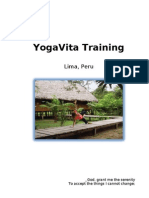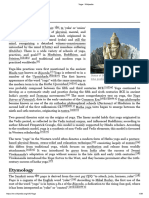0% found this document useful (0 votes)
58 views3 pagesUnit 1 - Class XI Notes
Unit 1 introduces Yoga as a holistic science that unites body, mind, and spirit, emphasizing its importance for physical and mental health, ethical living, and spiritual realization. It clarifies misconceptions about Yoga, outlines its various forms, and highlights its benefits across different aspects of life. The document underscores Yoga's relevance in contemporary society and its inclusion in educational curricula.
Uploaded by
kavyakandpal2008Copyright
© © All Rights Reserved
We take content rights seriously. If you suspect this is your content, claim it here.
Available Formats
Download as DOCX, PDF, TXT or read online on Scribd
0% found this document useful (0 votes)
58 views3 pagesUnit 1 - Class XI Notes
Unit 1 introduces Yoga as a holistic science that unites body, mind, and spirit, emphasizing its importance for physical and mental health, ethical living, and spiritual realization. It clarifies misconceptions about Yoga, outlines its various forms, and highlights its benefits across different aspects of life. The document underscores Yoga's relevance in contemporary society and its inclusion in educational curricula.
Uploaded by
kavyakandpal2008Copyright
© © All Rights Reserved
We take content rights seriously. If you suspect this is your content, claim it here.
Available Formats
Download as DOCX, PDF, TXT or read online on Scribd
/ 3























































































